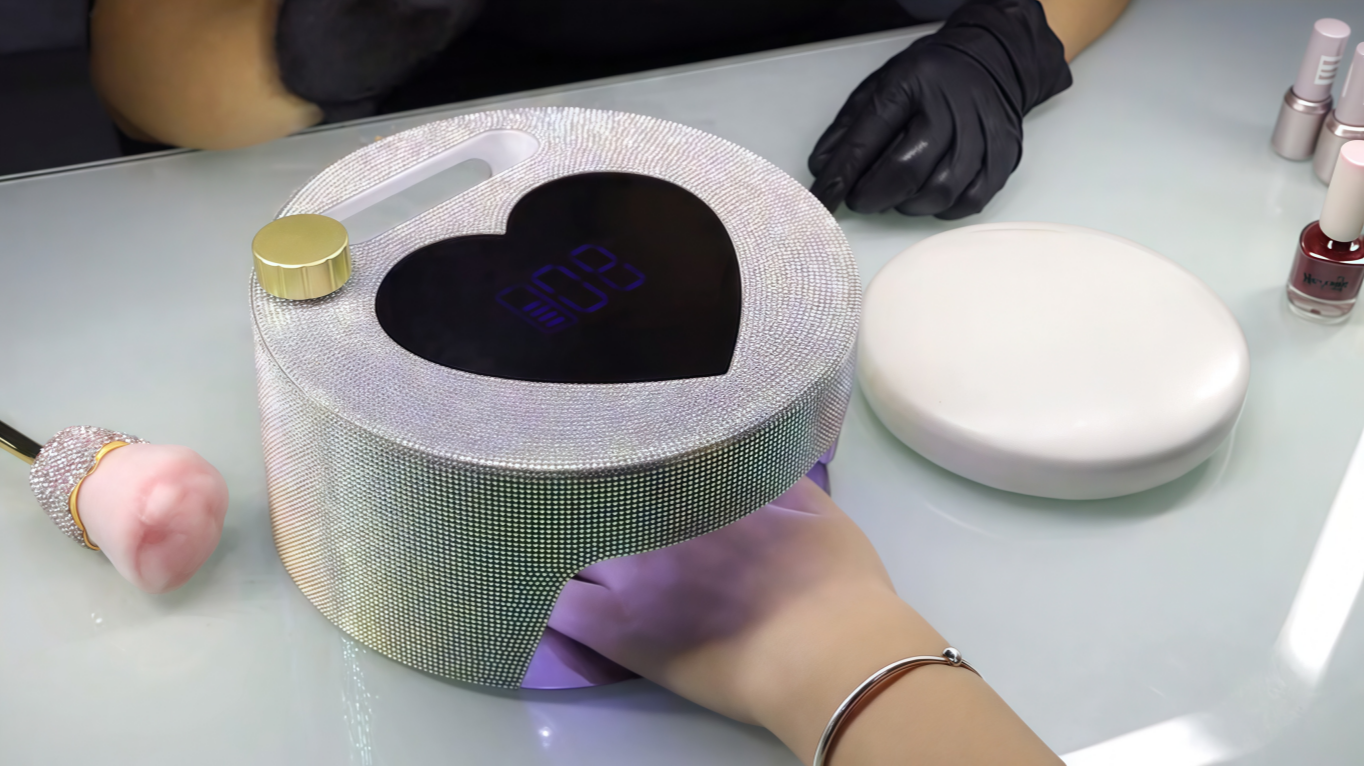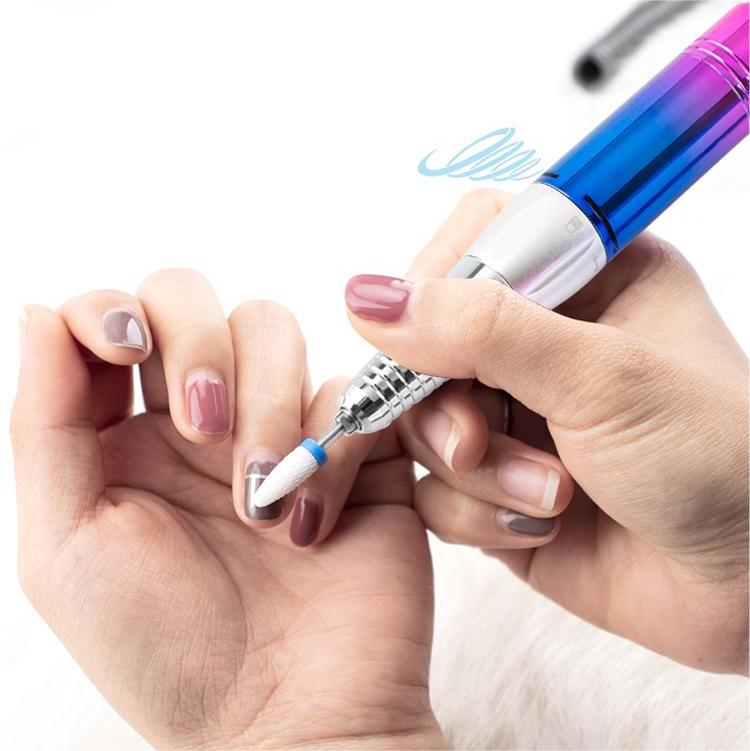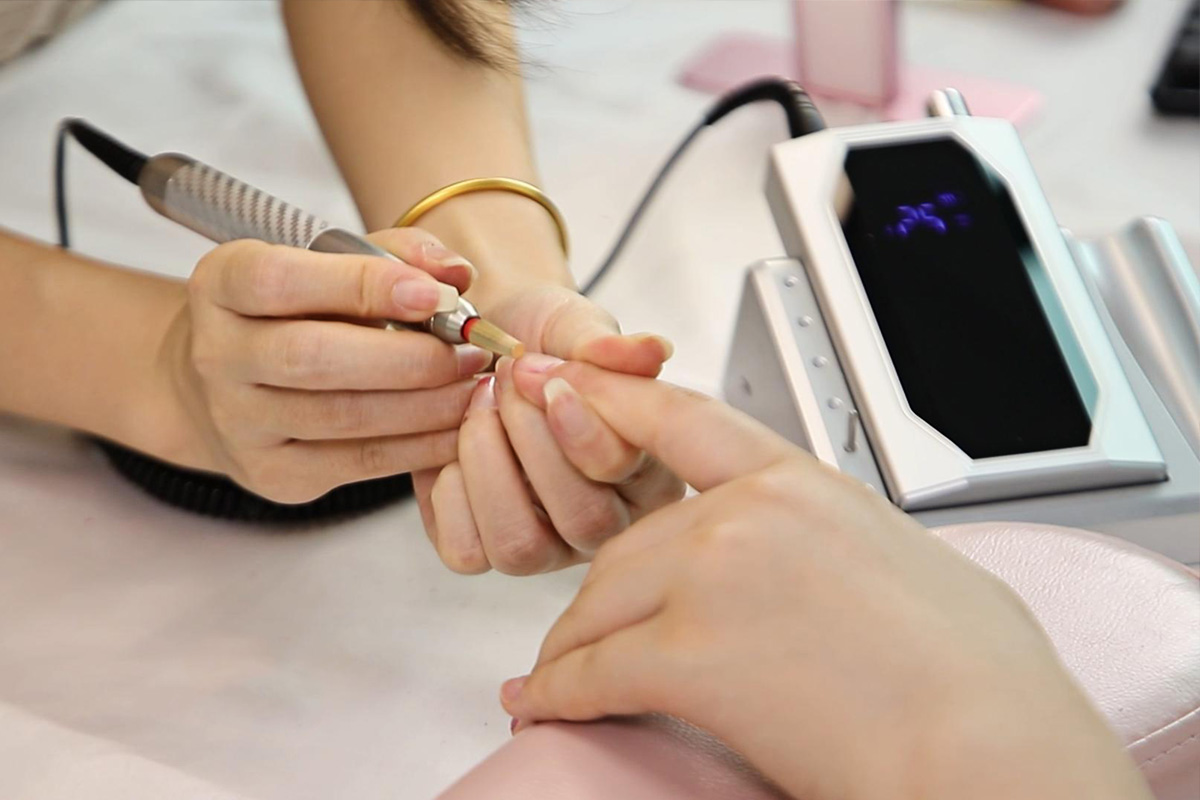A nail drill is an indispensable tool in the nail care process. It uses a high-speed rotating grinding wheel to polish the surface of the nails, making them smooth and shiny. The speed of a nail drill is one of the crucial factors affecting the polishing effect.
RPM, which stands for Revolutions Per Minute, refers to the speed at which the drill bit rotates. In a nail drill, it determines the speed and intensity of the manicuring process. Generally, the higher the speed of a nail drill, the better the polishing effect. However, excessively high speeds can lead to over-polishing of the nail surface, causing damage. Therefore, it is essential to choose the speed of a nail drill wisely.
Nail drills can be classified based on various criteria. For instance, they can be categorized according to the motor inside the drill handle, which includes brushed nail drills, coreless nail drills, and brushless nail drills. Another classification is based on whether they have a battery. They can be divided into traditional plug-in models with a foot pedal and new wireless rechargeable models. Generally, the former can reach speeds of up to 45,000 RPM, while the latter operate at 35,000 RPM.
1. Different Materials, Different Speeds: The choice of abrasive wheel material in a nail drill determines the appropriate speed. For instance, for a diamond abrasive wheel, it is recommended to use a speed of 20,000-25,000 RPM, while for a paint-coated abrasive wheel, a speed of approximately 8,000-10,000 RPM may be sufficient.
2. Different Grinding Head Sizes, Different Speeds: The size of the grinding head also influences the required speed. Generally, larger grinding heads require higher speeds. For example, for grinding heads below 10mm, a recommended speed is between 18,000-25,000 RPM; for grinding heads above 10mm, it’s advisable to keep the speed controlled between 12,000-18,000 RPM.
3. Different Targets, Different Speeds: The speed of a nail drill should be adjusted based on the specific target of operation. For instance, when polishing the surface of nails, a suitable speed typically falls between 3,000-5,000 RPM; when removing skin underneath the nails, the speed should be lowered to below 2,000 RPM.
4. Different Stages of Operation, Different Speeds: The required speed of a nail drill also varies depending on the stage of operation. For nail removal tasks, a lower speed between 5,000-10,000 RPM is recommended. For jewelry polishing, the speed should be moderately increased, but should not exceed 20,000 RPM. When performing nail shaping, a speed between 15,000-20,000 RPM is generally suitable.
1. Understanding Rotation Directions: Nail drills have two rotation directions – forward (F, clockwise) and reverse (R, counterclockwise).
2. Start at a Low Speed and Gradually Increase: Begin at a low speed and slowly increase it, especially if you have limited experience. Avoid starting at high speeds directly.
3. Select Appropriate Abrasive Wheels and Grinding Heads: Choose the right abrasive wheel and grinding head based on the desired polishing effect and the target of operation. Familiarize yourself with the corresponding speed range before using the nail drill to prevent any damage to the nail surface.
4. Maintain a Vertical Position: When performing nail operations, ensure the nail drill is held in a vertical position. This helps prevent unnecessary harm and common friction wear.
Mastering the speed of a nail drill is one of the essential skills for nail technicians. Stay calm, pay attention to every detail, and approach each operation with care. By combining the above standards and techniques in actual practice, readers can select the speed of a nail drill in a rational and efficient manner, thereby enhancing work efficiency.
Social Sharing: If you found this guide valuable, please consider sharing it on your favorite social media platforms. Your support helps others get access to this crucial information!
Feedback and Comments: We truly value your thoughts and feedback! If our website’s setup permits, kindly leave your comments, questions, or experiences below.





